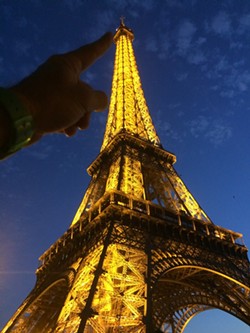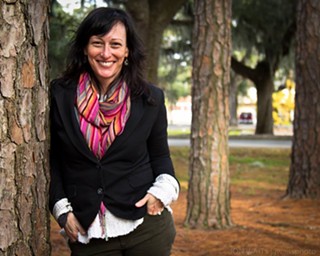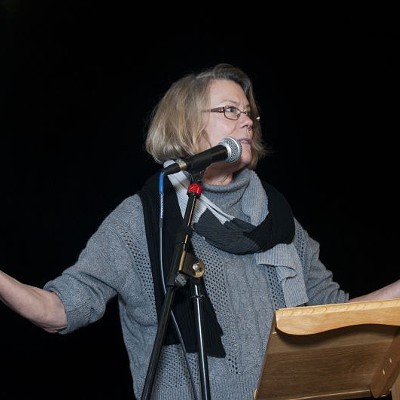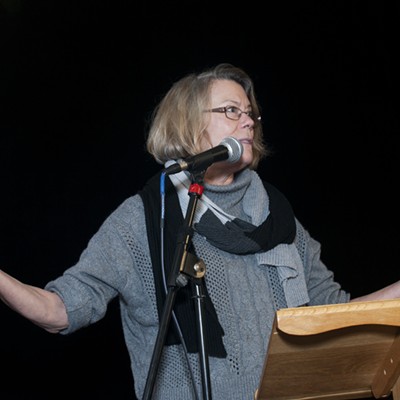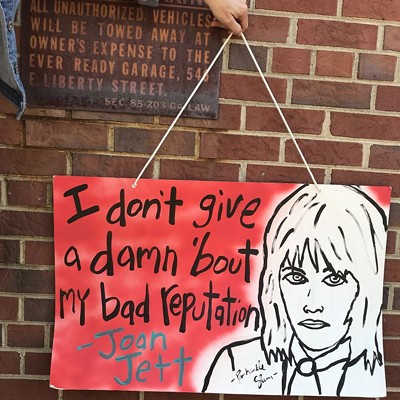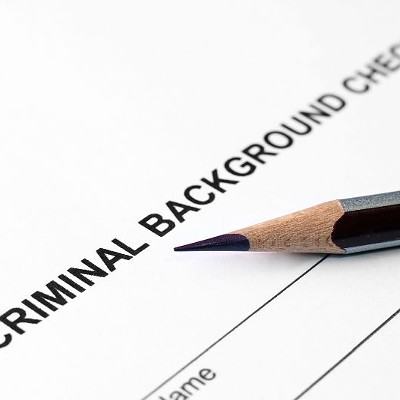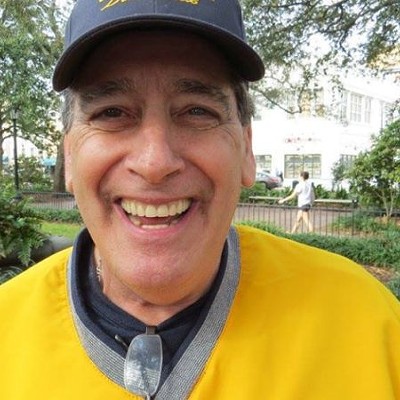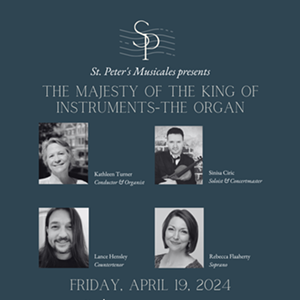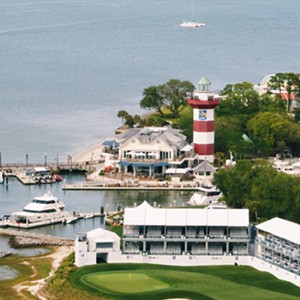WHEN YOU arrive in Paris fresh off the red eye, do not—I repeat, do NOT—give in to the temptation to take a nap.
Even if your head is full of fizz from the Champagne served by red-lipsticked flight attendants (Air France keeps it so classy in coach!) and the six-hour time change has tangled up your circadian rhythms into a dissonant jangle, you must. Not. Sleep.
“Otherwise, you’ll waste three days on jet lag,” warned NYU Paris student Jordan Veitinger, home for the summer working at the 5 Spot, where we dined the night before our departure. “Just throw down your bags, get a coffee and go.”
Jordan’s advice proved most valuable. It was 10am when we arrived in the Marais district, a culturally-rich neighborhood of cobblestoned streets dating back to the 1200’s where Victor Hugo penned Les Misérables. Bleary-eyed, we schlepped our giant American suitcases up narrow spiral stairs to the 17th-century apartment I booked on ParisAddress.com, a sunny roost that looked out onto a shared courtyard blooming with red geraniums, pink hollyhocks and a neighbor who liked to exercise in his underpants.
Two tiny loft spaces meant each kid had their own “room”—a rarity on our travel budget—though they were more impressed with the apartment’s fancy Nespresso machine than that Jim Morrison died in the building next door.
The crisp white duvets beckoned, but we headed back through the cerulean blue iron gates to explore the architectural feast that lay within walking distance of our domicile temporaraire on Rue de Beautreillis, aided by several tiny cups of espresso each. (And you thought Notre-Dame’s buttresses were flying!)
We whirled through many iconic checkpoints on that very afternoon with my parents, seasoned Parisian visitors who rented their own place in the Marais for the entire month, part of their sagacious plan to spend their children’s inheritance while they’re still around to enjoy it with us.
My indefatigable mother led us past the historic administrative offices of the Hotel de Villem, draped in rainbow flags to express solidarity for the Orlando tragedy, to Île de la Cité, where the famous cathedral rises into the sky in all its Gothic gargoylian glory. From the gardens, we walked to the sunken Holocaust Memorial, still cordoned off from the recent flooding as the Seine lapped its famous banks. We crossed over the Pont au Double to the English book purveyor Shakespeare and Co. and later sipped melted chocolate at Angelina’s, overloading our senses until the olfactorily-challenged members of the family staged a small revolt after too much time in a cheese shop.
A word on multi-generational travel: It can be hard to herd everyone at the same pace, especially when the spry septuagenarians forge forth and the teenagers trail behind with their faces in their phones. Plus, there’s always that one person who always gets distracted by shoe stores (how will I know what’s chic if I don’t browse?!)
We found that assigning one person at a time as Le Chef in charge of routes and maps can prevent meltdowns, except for that time I took the lead and marched everyone into traffic on the Champs Elysées.
By the end of that first day we were all punch drunk (some of us regular drunk from a bottle of rosé with dinner), and we fell into bed exhausted and fully adjusted to Parisian time.
We all know that wherever you go, there you are, so you know I packed my Savannah-colored glasses, the ones with the civic-centric lenses. I was particularly interested how Paris handles being what journalist and recent Savannah guest Elizabeth Becker cites in her best-selling Overbooked one of the best examples of tourism in the world.
Obviously, Paris dwarfs our little Southern American hamlet in size and scope, its habitation documented from prehistoric times, its politics and history and art fused in layers so complex and deep that my public school education never even began to touch them. (Though my high school French served quite well, merci beaucoup. And I did get creepily close to the artfully-arranged skulls and bones in the Catacombs, ancient limestone quarries deep below the metro trains and plumbing where six million bodies were re-interred in the 1700s after existing cemeteries started, er, overflowing.)
Paris has a lot to handle in any season with more than 32 million visitors a year, but this summer is particularly tricky. Last November’s terrorist attacks means armed soldiers regularly stroll through public spaces, though I never saw anyone stopped or frisked. The famous public transportation system ran on time and boasted classically-trained busking musicians, but most subway cars and buses were standing room only at all hours. More upsettingly, some cafés ran out of croissants by 9am.
Peak tourist season was still a month off, but the streets were already full of international brigades of rowdy soccer fans in town for the 2016 Euro Cup. I went against every hooligan-fearing instinct in my neurotic brain to follow the futbol-mad members of the family to a match at the 80,000 person Stade de France, where the super-tight security and intelligent funneling of bodies allowed me to relax and enjoy watching Iceland beat Austria in the last two seconds. I haven’t seen that many grown men cry at once since group therapy in the ‘90s.
And the museums! We eschewed the long lines at the Louvre and the Musee D’Orsay for the Picasso Museum and the small (by Paris standards) Musée Marmottan Monet, home to “Impression, Soleil Levant,” the painting that launched the Impressionist movement. Our minds were blown by the Musée de la Chasse and de la Nature, dedicated to the region’s nature vs. man lore and fancifully combining hunting artifacts, contemporary art and taxidermy. We may have missed the Mona Lisa, but we thought it better to digest smaller rooms rather than spend seven hours wandering huge halls with thousands of other cranky tourists. (In case you weren’t aware, teenagers hate museums. All museums. Even the ones with a stuffed giraffe poking its neck through the floor.)
One of the points of Overbooked is that cities with the most successful tourism plan for the people who live there, and any added infrastructure is built to be accessible to all. Paris’ public bike system is clearly a hit with the locals, who cruise from one arrondissement to another on the sturdy frames all day long, silk scarves streaming behind them and front baskets overflowing with fresh baguettes.
Abandoning the grandparents and kids to each other one afternoon, my husband and I rented a pair at one of the kiosks pas de problème and rode to the Eiffel Tower along a well-marked bike route. Though apparently bus drivers also like to use this lane, too, which gave me occasion to use the filthy French I’ve been saving up all these years. On another note, I’m so pleased to see on the Savannah Bicycle Campaign’s new bike map that our city plans to offer several more public bike outposts around the historic district.
That isn’t to say that Parisians don’t have their issues, and they aren’t afraid to march about them. A 20,000 person demonstration against President Hollande’s labor reforms at the Place de Bastille near our metro stop closed down the streets for hours as gerdarmerie in full riot gear directed traffic. Several more protests cropped up during the week, and the French Robocops gave them a wide but impenetrable berth when we tried to look on. But even with a recent garbage strike, there was still way less litter on the streets of Paris than the gauntlet of discarded fast-food bags along Abercorn. And the only shots fired were by feet at goalposts.
The less demonstrative locals appeared to take it all in stride as they lounged in the cafés in those pretty cane chairs, smoking hand rolled cigarettes and rolling their eyes over Brexit. I mean, these are the people who perfected the art of blasé, although I noticed with great consternation that the chic-est among them paired their tailored frocks with Adidas sneakers.
Underneath the jaded façade, I found that Parisians are a generous lot, eager to share their pride of place as well as food and drink. (Kind of like Southerners, though I don’t see that kiss-on-both-cheeks thing happening around here.)
My brother had the good fortune to marry a gorgeous French woman a few years ago, and we spent an afternoon just beyond la peripherie of the city in her mother’s glorious garden with our extended family and friends, savoring saucisson and more rosé (Savannah’s Best Sommelier Jason Restivo promised me back in May that the whole world is drinking pink wine right now, and he was right!)
Yet even on another continent, my own city was never far from my over-stimulated mind. Surrounded by centuries stacked around a city bustling with people working and living, I couldn’t help but see shades of Savannah everywhere: Sitting in the grass of the Place de Vosges, the oldest planned square in Paris bordered by fabulous homes built for the friends of Henri IV. Peeking through wrought iron gates to glimpse secret jardins or hanging laundry. Looking out onto the steeples and skyscrapers from the roof of the ultra-modern Centre de Pompidou and sensing that past, present and possibility somehow can exist at once.Even Le Marais translates as “the marsh.”
My provincial perspective was surely boosted by the sight of actual other Savannahians: One magical evening, just after the nightly sparklefest at Le Tour Eiffel, we ran into Geoff Repella with partner Warren Bimblick and daughter Grace. Later in the trip we took the fast train to Provence, where the SCAD family welcomed us to its magnifique Lacoste campus, housed in a mountainside medieval village with its own chateaux and rosé vintage, the bee flag flying above the lavender fields.
So maybe the French connection isn’t so far-fetched, and when it comes to a blueprint for a wondrous destination that gets it right, we’ll always have Paris.
Still, it was nice to get back to the real marsh, where ordering ice in your wine isn’t such a faux pas. I guess it’s true that there’s no place like home—or your own bed.

